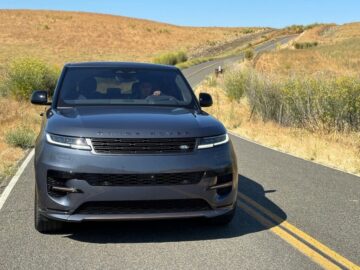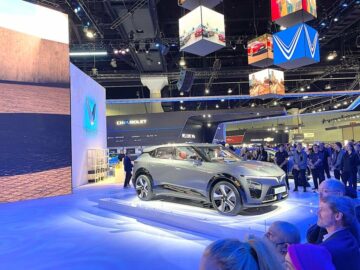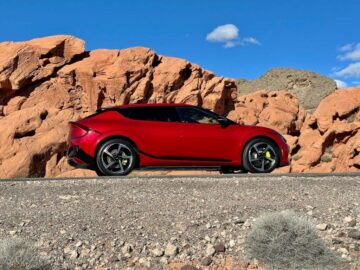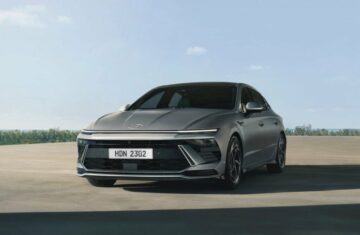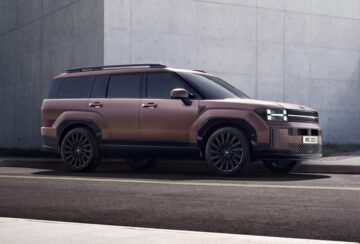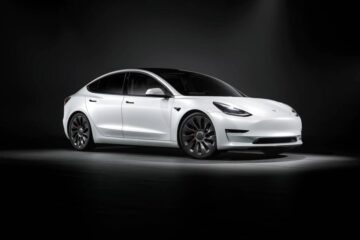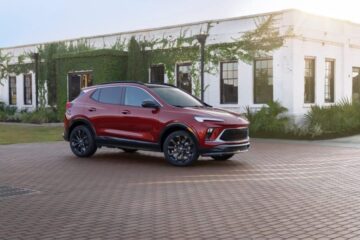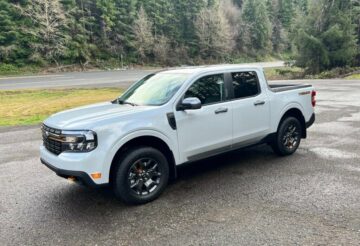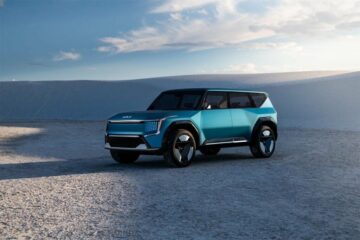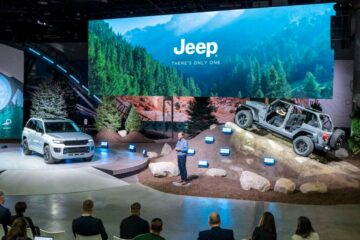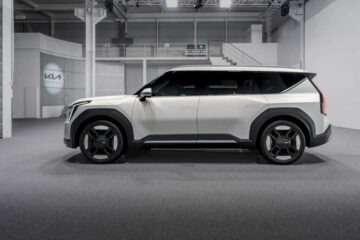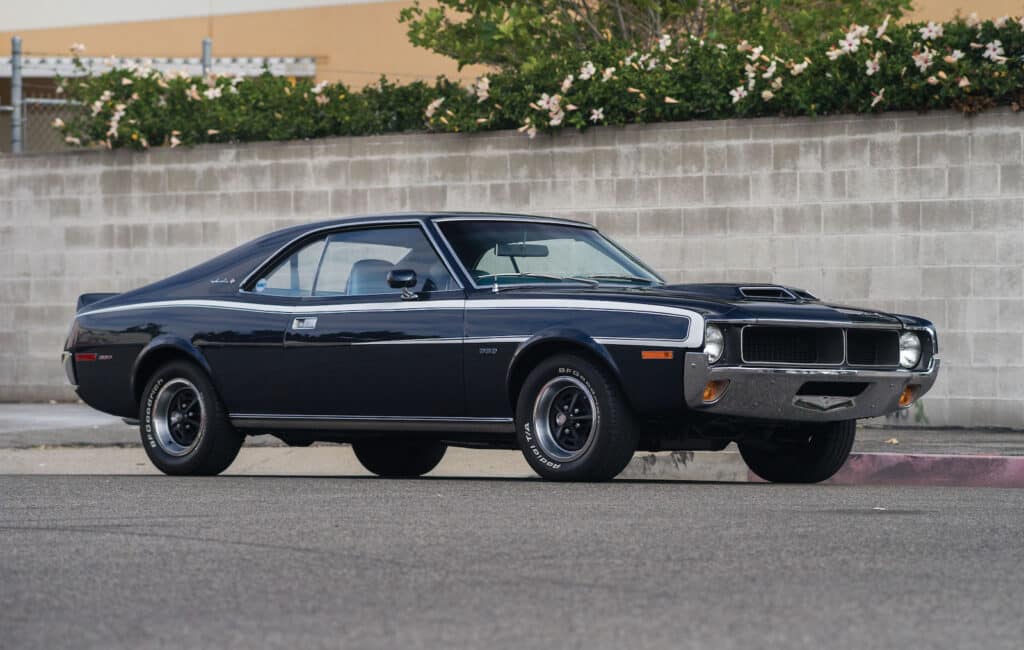
It seems unlikely that the company renowned for the dowdy Rambler American would unleash something as sexy as the AMC Javelin. But in the wake of the Ford Mustangs phenomenal success, it’s only natural that every American automaker would look to catch some of the Blue Oval’s pony car success.
And so, this week in 1968, as unlikely as it seems, AMC introduces the Javelin as the company tries to counteract its economy car image.
Crafting an image
Of course, AMC had long sown its image as a purveyor of economically sensible sedans, an image it first fostered as Nash Motors when it introduced the compact 1950 Nash Rambler.

The car was the result of Nash president George Mason’s insistence on filling niches that Detroit’s Big Three had overlooked. He also engineered a merger with Hudson Motor Car Co. in 1954 to form American Motors. But Mason died suddenly in October of that year. While his dream of combining Nash with Hudson was accomplished, his further ambition to then bring in Studebaker and Packard to form a new company with the same economies of scale as the Big Three died with him.
Mason’s successor, George Romney, Sen. Mitt Romney’s father, became AMC President, and looked to the Rambler to be the company’s salvation. And even as the Rambler grew in size by 1957, he brought back the previous-generation compact Rambler as the Rambler American three years after it had been discontinued. But Romney’s vision proved prescient, as Rambler sales boomed in the late 1950s. By 1960, AMC sold nearly 450,000 Ramblers — good enough to rank number three in sales behind Chevrolet and Ford.
But when Romney left AMC in 1962 to enter politics, his successors looked to diversify the line-up in an ultimately doomed effort to match the Big Three. But it led to the birth of the Javelin, the vision of AMC’s design chief, Richard Teague.
Design takes the lead

Teague started his career at General Motors before being lured away to Packard in 1953. When the automaker folded, Teague went to Chrysler in 1957, joining AMC two years later. He would succeed styling chief Ed Anderson by 1964.
By then, however, the Ford Mustang’s overwhelming success spurred Detroit’s automakers for an answer. Not surprisingly, they followed Ford’s playbook. Then again, Ford had created the class. So just as the Mustang was based on the humble, dull Ford Falcon compact, the Javelin was based on the humble Rambler American compact.
Riding a 109-inch unibody platform, the AMC Javelin shared its suspension with its dowdy sibling, sporting coil springs and wishbones up front and semi-elliptic leaf springs out back.

But its looks were anything but dull, having been derived from two 1966 AMC Project IV concept cars: the two-seat AMX, and the four-seat AMX II. But unlike the Mustang, which came in three body styles, the Javelin came with one, a fastback 2+2 coupe, which would be sold alongside a two-seat variant, the AMX.
As you might expect, the interior was fitted with vinyl bucket seats and carpeting, but ordering the SST package upgraded the interior, as the SST was the top trim level.
Power for the people
The standard engine was a 3.8-liter inline 6-cylinder engine mated to a 3-speed manual or 3-speed automatic transmission. But that could be upgraded to a 4.8-liter V-8 with either two or four-barrel carburetors, a 280-horsepower 5.6-liter V-8, or a 315-hp 6.4-liter V-8, the last mill being a mid-year addition. But it was only offered with the 3-speed transmissions, while the 5.6-liter could be fitted with an optional 4-speed. When paired with the optional Go Package, which added front disc brakes, a heavy-duty suspension, dual exhaust, redline tires, mag wheels and body stripes, the smaller-engine car was faster.
But the Javelin proved successful, as AMC moved more than 55,000 units in 1968, outselling the 45,000 Plymouth Barracudas sold that year. But it was far surpassed by Chevrolet’s 235,000 Camaros and Ford’s 300,000 Mustangs.

The Javelin saw few changes for 1969; 1970 brought the introduction of the Mark Donohue Signature Edition, and the Trans Am Edition. All Javelins received a facelift with a ram air intake, and performance was better than ever. But sales were sliding, declining to 28,000 units.
Declining fortunes
The following year brought a redesign, albeit a controversial one, with exaggerated wheel arches that weren’t to everyone’s liking. The two-seat AMX was dropped, but the name lived on as a trim package.
And as with other muscle cars, horsepower was declining with the onset of government emission standards. Despite the Javelin winning Trans Am titles in 1971 and 1972, sales fell along with power output. By 1975, it would be gone. Being Detroit’s smallest automaker, AMC’s limited resources were needed to free up manufacturing capacity for a car with wider appeal.
And so, Javelin production came to end to make room for the company’s newest model, one the company thought would be a bigger success — the AMC Pacer.
- SEO Powered Content & PR Distribution. Get Amplified Today.
- PlatoData.Network Vertical Generative Ai. Empower Yourself. Access Here.
- PlatoAiStream. Web3 Intelligence. Knowledge Amplified. Access Here.
- PlatoESG. Automotive / EVs, Carbon, CleanTech, Energy, Environment, Solar, Waste Management. Access Here.
- PlatoHealth. Biotech and Clinical Trials Intelligence. Access Here.
- ChartPrime. Elevate your Trading Game with ChartPrime. Access Here.
- BlockOffsets. Modernizing Environmental Offset Ownership. Access Here.
- Source: https://www.thedetroitbureau.com/2023/08/the-rearview-mirror-amc-adds-some-muscle/
- :not
- $UP
- 000
- 28
- 300
- a
- accomplished
- added
- addition
- Adds
- After
- again
- AIR
- All
- along
- alongside
- also
- am
- ambition
- AMC
- American
- an
- and
- anderson
- answer
- anything
- appeal
- AS
- At
- automakers
- Automatic
- away
- back
- based
- BE
- became
- been
- before
- behind
- being
- Better
- Big
- bigger
- birth
- Blue
- body
- bring
- brought
- Bureau
- but
- by
- came
- Capacity
- car
- Career
- cars
- Catch
- Changes
- Chevrolet
- chief
- chrysler
- class
- CO
- coil
- combining
- compact
- company
- Company’s
- concept
- controversial
- could
- course
- created
- credit
- Declining
- Derived
- Design
- Despite
- died
- diversify
- Doomed
- dream
- dropped
- economies
- Economies of Scale
- economy
- ed
- edition
- effort
- either
- emission
- end
- Engine
- enough
- Enter
- Even
- EVER
- Every
- everyone’s
- expect
- Facelift
- falcon
- far
- faster
- few
- filling
- First
- followed
- following
- For
- Ford
- form
- fostered
- Free
- from
- front
- further
- General
- General Motors
- George
- Go
- gone
- good
- Government
- grew
- had
- having
- he
- heavy-duty
- him
- his
- However
- HTTPS
- ii
- image
- in
- included
- interior
- introduced
- Introduces
- Introduction
- IT
- ITS
- joining
- jpg
- just
- Last
- Late
- later
- Led
- left
- Level
- Limited
- Long
- Look
- looked
- LOOKS
- Mag
- make
- manual
- manufacturing
- mark
- Mason
- Match
- max-width
- Merger
- might
- mirror
- model
- more
- Motor
- Motors
- moved
- name
- Natural
- nearly
- needed
- New
- Newest
- number
- october
- of
- offered
- on
- ONE
- only
- or
- Other
- out
- output
- package
- paired
- performance
- phenomenal
- photo
- platform
- plato
- Plato Data Intelligence
- PlatoData
- politics
- Pony
- power
- president
- Production
- project
- proved
- RAM
- rank
- received
- redesign
- Renowned
- request
- Resources
- result
- Richard
- Room
- sales
- same
- saw
- Scale
- sedans
- seems
- shared
- show
- signature
- Size
- sliding
- smallest
- So
- sold
- some
- something
- standard
- standards
- started
- Stripes
- succeed
- success
- successful
- surpassed
- suspension
- takes
- than
- that
- The
- then
- they
- this
- this week
- thought
- three
- tires
- titles
- to
- top
- two
- Ultimately
- units
- unleash
- unlike
- unlikely
- upgraded
- Variant
- vinyl
- vision
- Wake
- was
- week
- went
- were
- Wheel
- when
- which
- while
- wider
- winning
- with
- would
- year
- years
- you
- zephyrnet

